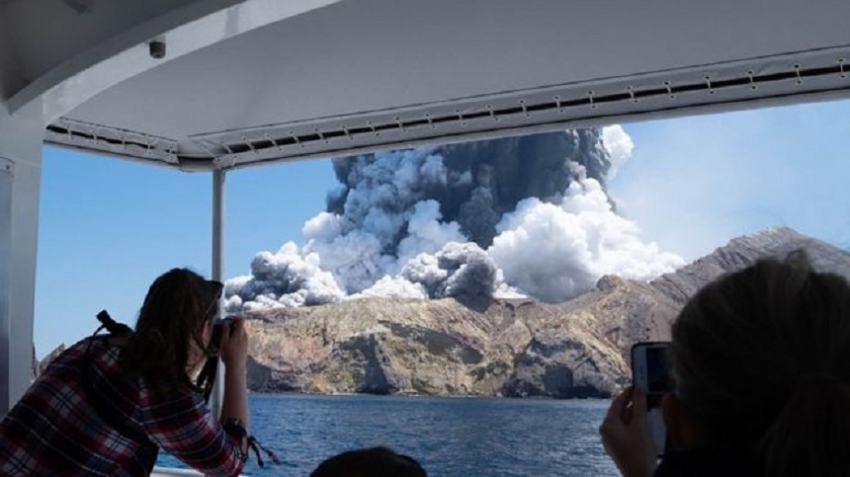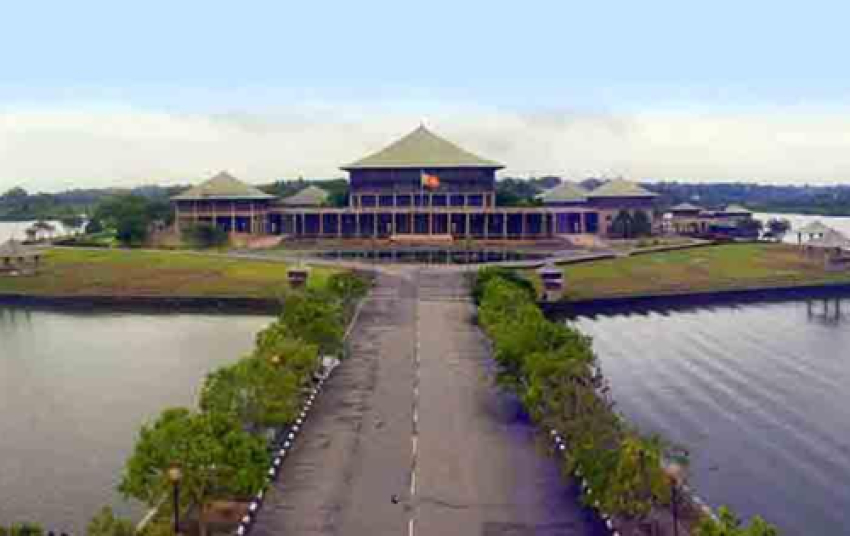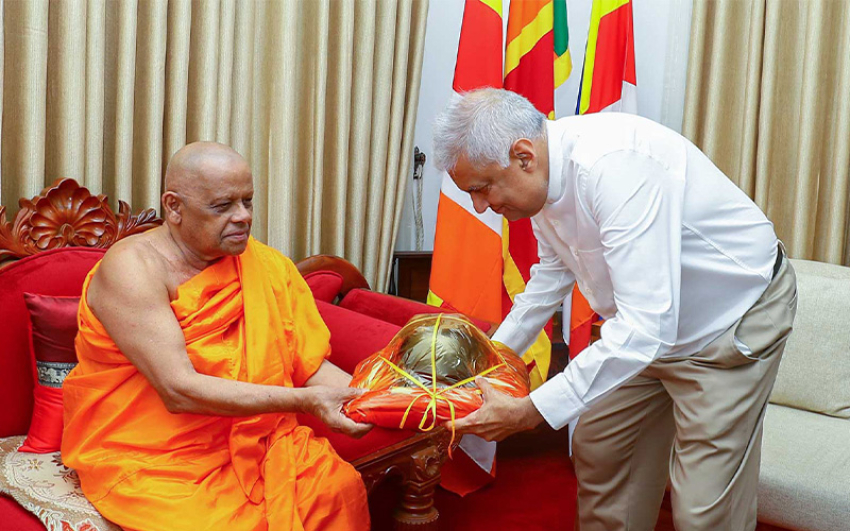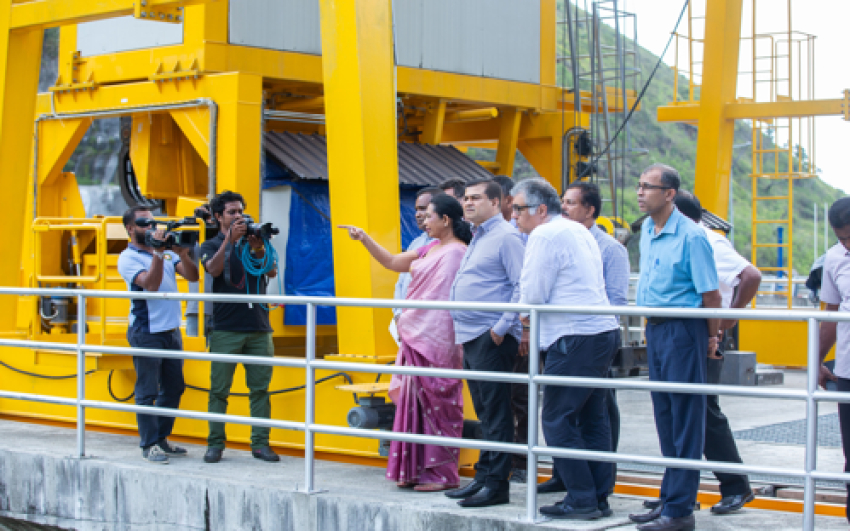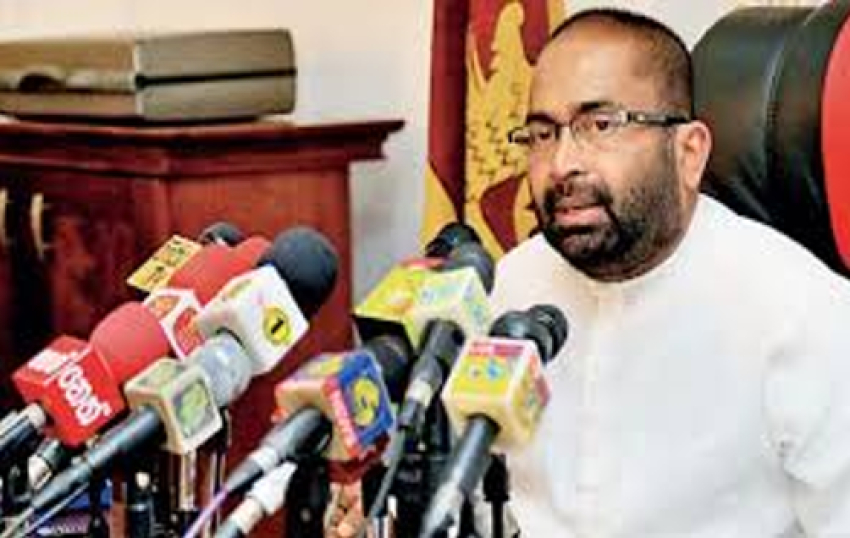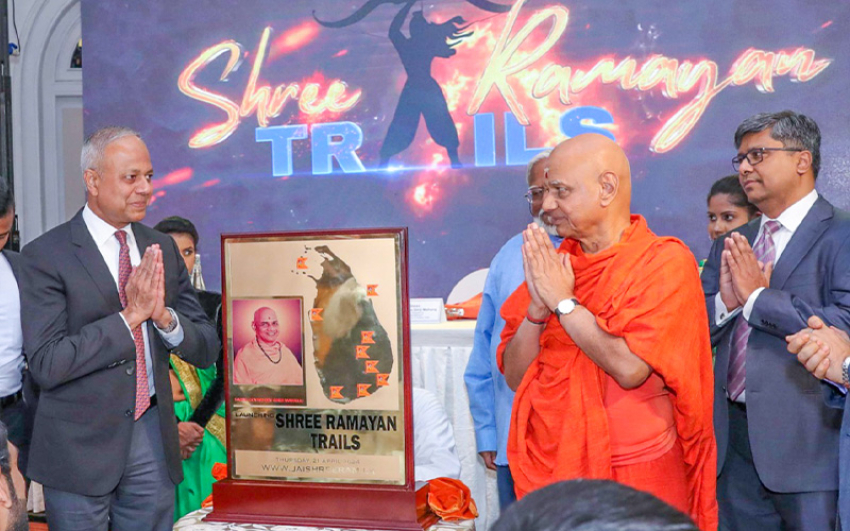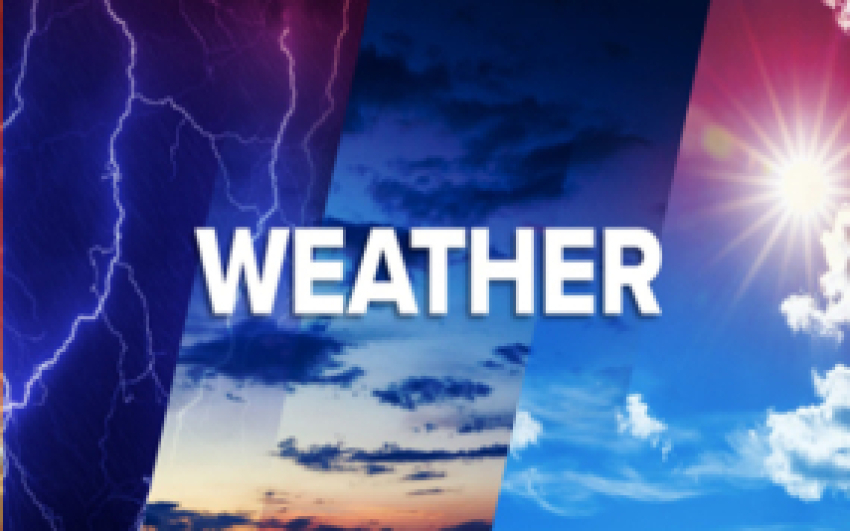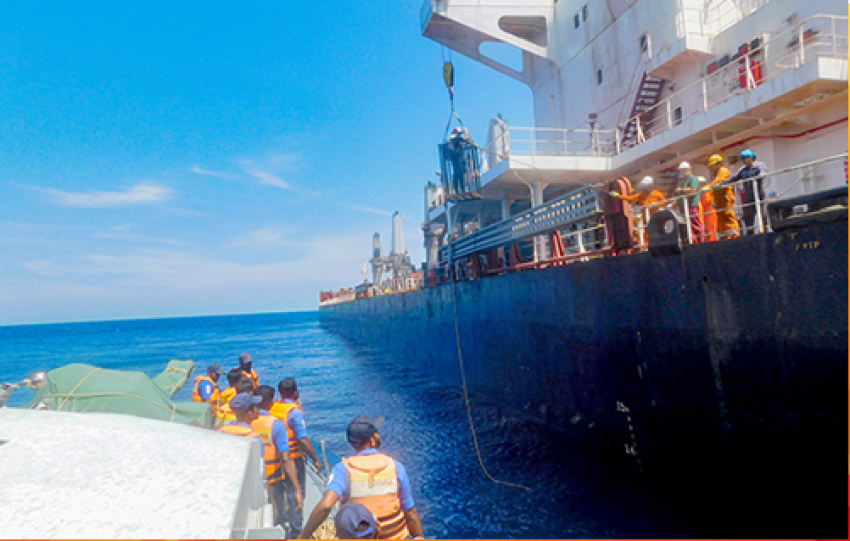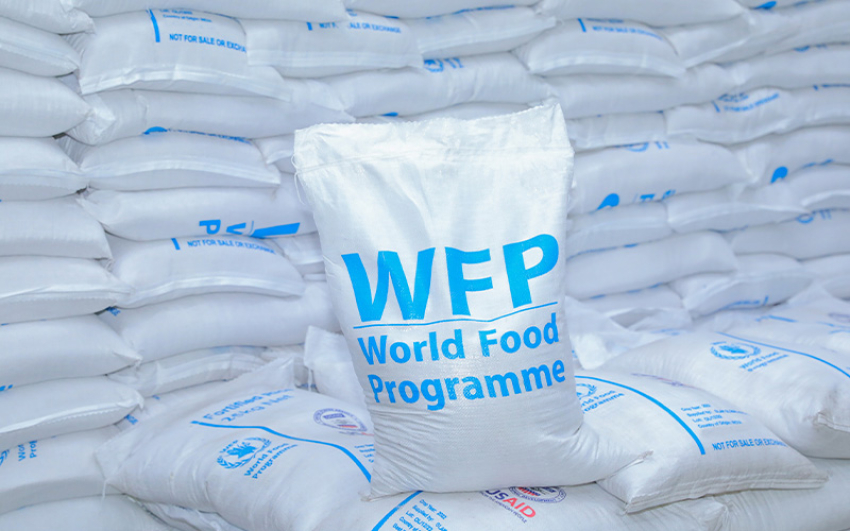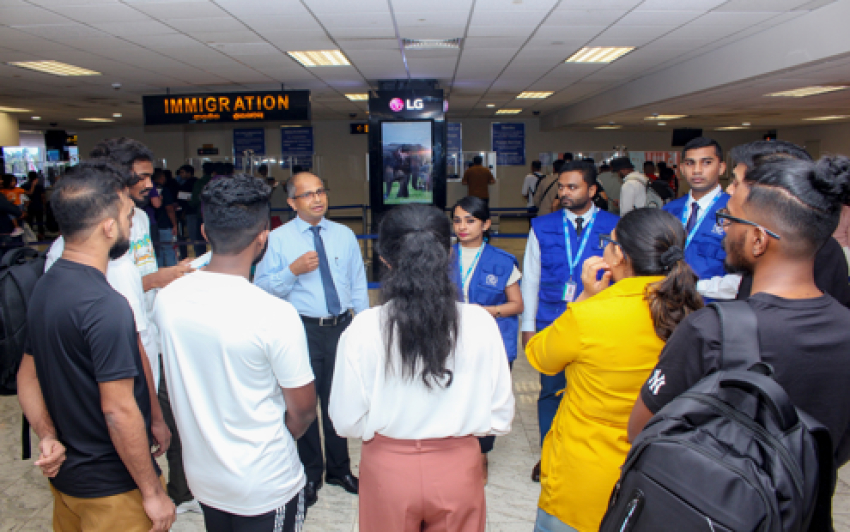New Zealand police have said they plan to recover bodies from White Island - where a volcanic eruption killed at least eight people - on Friday morning.The recovery mission will go ahead despite the risk of another eruption, police said."Today is less safe than yesterday, and the day before that," volcanologist Dr Graham Leonard said.At least eight people are thought to be on the island following the eruption on Monday. All are presumed dead.Police said they were planning a "high-speed recovery" of the bodies.Eight others have already been confirmed dead, and 20 are in intensive care after suffering burns when the volcano erupted as tourists were visiting.
New Zealand's geological hazard information site, said on Thursday there was a 50-60% chance of another eruption within the next 24 hours.But families of the victims are growing increasingly desperate for the bodies to be recovered."We are now living with a growing sense of desperation to bring home those that we know are there," Whakatane Mayor Judy Turner told reporters. "The frustration of those families most affected is completely understandable."Deputy Police Commissioner Mike Clement told reporters on Thursday that officials had agreed a recovery plan even though the risk that the volcano will erupt had not diminished. "This is not a zero risk operation," he said.Eight specialists from the New Zealand Defence Force will go to the island on Friday morning and "make every effort to recover all bodies".Surveillance flights have allowed police to locate only six bodies so far. "We will make calls as the morning goes by," Mr Clement said.He added that his biggest concern was the unpredictable volcano, followed by the weather, the direction of the wind and the state of the sea."A lot of things have to go right for this to work."The fast recovery will also mean there will be less time to collect the evidence needed to ensure that the bodies are properly identified."It does come with trade-offs," Mr Clement said.Volcanologist Dr Leonard said the recovery mission could be dangerous. "Whakaari/White Island is an active volcano, and the estimated chance of an eruption is increasing every day," he said.
Local Maori groups have placed a rahui over the waters around the volcano and the coastal stretch on the Bay of Plenty.It is a traditional prohibition restricting access to an area. White Island, called Whakaari by the Maori, holds spiritual significance for the local Ngati Awa tribe.The rahui was placed on Tuesday morning and will be lifted only once the missing bodies are recovered.An expert from the Ngati Awa will accompany authorities in the recovery mission."Ngati Awa are front and centre of this operation so for the uplifting of the deceased, once that decision is made, Ngati Awa will be going across to Whakaari/White Island," deputy commissioner Wally Haumaha told RNZ.Rahui are often placed on areas after deaths or accidents occur or to protect natural resources in a specific area. They are not legally binding but are commonly respected by New Zealanders.
The volcano erupted on Monday when at least 47 visitors from around the world were on the crater.Many of the survivors are still in intensive care. Some have been unable to identify themselves because their burns are so severe, police say.An estimated 120 sq m of replacement skin will be needed for all the patients, according to Dr Peter Watson from New Zealand's National Burns Unit.Surgeons in burns units around the country are working around the clock, authorities said.Some of the Australian victims have been flown back to their home country, and more are expected to follow in the coming days.White Island is a popular tourist destination off the northern coast of North Island and there were day tours
What we know about those affected
The volcanic eruption in New Zealand has left some families grieving loved ones and others desperately awaiting information.Forty-seven people were on the privately owned White Island, or Whakaari, volcano when it erupted on Monday.Police have said nine people are still missing, and are presumed to be dead. Officially, eight people are known to have died, while more than 30 people were injured. Many were reported to have suffered severe burns.Of the 47 visitors, 24 were from Australia, nine from the US, five from New Zealand, four from Germany, two from China, two from the UK, and one from Malaysia.No names have been publicly released by the authorities. This information has come from relatives and friends or media reports, and is subject to change.Hayden Marshall-Inman, New Zealand tour guide -
His brother confirmed his death on Facebook, writing: "Friends and family, very sad news this evening. My bro Hayden Marshall-Inman has past [sic] away doing the one thing he loved. Thanks for all your messages. I'll be in touch when we know more."
The post was accompanied by a picture of the family dressed in animal outfits.His brother, who did not want to be named, told local media that Hayden had been doing tours for the past 15 years and knew the risks."It is what it is, he died doing what he loved," he said.Julie and Jessica Richards, Australian mother and daughter - deadMother and daughter Julie and Jessica Richards, aged 47 and 20, have also died.
Jessica Richards had been studying veterinary science at the University of Queensland and shared with her mother a love of the outdoors, said family spokesman John Mickel.He told reporters on Wednesday that relatives were "united in grief"."For this family, [the festive season] will be one of deep poignancy," he said."You live in hope that it's not going to be your loved one's name that comes up. The hope was snuffed out this morning."Australian family: Berend and Matthew Hollander - dead; Martin and Barbara Hollander - missing
der, 16, and Matthew Hollander, 13, have died in hospital from their injuries, according to their school.
The boys' parents, Martin and Barbara Hollander, remain missing.
In a statement cited by Australian media, relatives said they were "absolutely heartbroken" at the loss of "wonderfully kind and spirited boys who lived short but fulsome lives".
Knox Grammar School headmaster Scott James described them as enthusiastic and popular students who had been actively involved in school life.
The family moved to Australia from the US six years ago.
Australian family: Gavin Dallow - dead; Zoe Hosking - missing; Lisa Hosking - injured
Engineer Lisa Hosking is in hospital with severe burns but her daughter, 15-year-old Zoe, remains missing on White Island and is presumed dead, according to a family statement.
The body of Ms Hosking's partner, 53-year-old Gavin Dallow, has been recovered.
The family from Adelaide were on a two-week cruise and it is believed they were on a day trip when the volcano erupted.
"We mourn the loss of Gavin and Zoe," the statement said. "Gavin was a wonderful son and brother… he was a generous man, always helping his family and his community.
"Our hearts break at the loss of Zoe at such a young age. We know her loss will also devastate her school community and the local Girl Guides, of which she was an active member."
Jason Griffiths, Australian tourist - dead
Jason Griffiths, 33, died in hospital on Wednesday. He was part of a group of nine friends on a trip that his brother-in-law, Steve Jarzynski, said he had been talking about since last year.
Six of the friends said in a statement that they had found Jason in a hospital in the early hours of Tuesday morning.
"From that moment until the moment of his passing, Jason was surrounded by friends and family members," they said in a statement released on Wednesday.
Tipene Maangi, New Zealand tour guide - missing
Image copyrightTIPENE MAANGI/FACEBOOK
Tour guide Tipene Maangi had apparently only been working for White Island Tours for a few months before the eruption. A relative said he was not supposed to be at work on Monday.
Loved ones described the 23 year old, known as Tip, as "the entertainer" and "confident and outspoken".
A vigil was held in his honour on Tuesday, with relatives calling for his safe return home.
In a message on Facebook, his cousin said: "You've got more than enough attention, it's time to make an entrance, it's time to come out singing your heart out."
Australian tourist: Krystal Browitt - missing
Student Krystall Browitt was on holiday with her family when she went missing.
According to Australia's The Age, her mother remained on board while Krystall, her father and sister all went to visit the volcano.
Police released her name on their list of the missing. Her father and sister are reportedly in comas in different hospitals in New Zealand.
Australian family: Anthony, Kristine, Jesse and Winona Langford - missing
Kristine and Anthony Langford are among the missingAnthony Langford, 51, his wife Kristine, and their two teenage children Jesse, 19, and Winona, 17, are reported as missing.Anthony's brother told Australia's Seven News that the family, from Sydney, was on a cruise to the island at the time of the eruption.
Skip Twitter post by @Andrew_Denney
Andrew Denney
✔
@Andrew_Denney
I have spoken with relatives of the Langford family missing after the #NZVolcano at White Island. They’re hopeful Anthony, Kristine, Jesse & Winona will br found at hospital or sheltering on the island. They’re asking for anyone who recognises them to speak up. @7NewsSydney
But according to Australian media, Jesse has been found alive - although his family remain unaccounted for.US newlyweds Lauren and Matt Urey were on their honeymoon. Lauren's mother, Barbara Barham, told the Washington Post the couple from Virginia had plans to visit a live volcano and were not concerned about possible eruptions.Matt, 36, left his mother a voicemail message saying they had been "burned very bad"."He said he would try to call as soon as he could, but talking and making phone calls was difficult," Ms Barham said of the message that Matt's mother relayed to her."His hands were so badly burned it was hard for him to make a phone call."
Matt's mother, Janet, revealed he underwent three hours of surgery but was now able to talk, take in fluids and eat jelly. However, Lauren, 32, who is in a different hospital, was still sedated on Tuesday.She revealed the couple, who were wearing respirators at the time of the explosion, had taken shelter "behind a large rock"."Ten minutes... could have meant life or death for them, but luckily they were already down the volcano close to the water, so they sheltered themselves a little bit," she told local news channel
Karla Mathews and Richard Elzer, Australian tourists - missing, presumed deadJason went to the island on a day trip with two others from the group, Australian couple Karla Mathews and Richard Elzer, both 32.
According to the statement released by their friends, both are "still on the island", where they were "advised that there are no signs of life"."We are incredibly saddened to have lost three of our closest friends," the group said.New Zealand tour guide Jake Milbank was working on the island on his birthday on Monday when the volcano erupted, according to the New Zealand Herald.He is now in hospital with burns to 80% of his body and his family by his side, the paper says. A fundraising page to help with his "long journey to recovery" has been set up by a family friend.In September his high school posted on Facebook about a trip to the island and paid tribute to its ex-student, described as an "awesome tour guide".
Why New Zealand is importing skin
By Caroline Parkinson
Health editor, BBC News website
11 December 2019
Share this with Facebook Share this with Messenger Share this with Twitter Share this with Email Share
Related TopicsNew Zealand volcano
Image copyrightAFP/GETTY IMAGES
Doctors treating the victims of the New Zealand volcano are importing skin to treat those burned in the eruption.
It is part of the intense medical response to treat those caught up in the disaster.
When someone has a burn injury, skin is used as a "natural plaster" to help healing. It helps stop infections and reduces scarring and pain.
Doctors take skin from another part of the body, such as the thigh or behind the ear, but donated skin is used if that is not possible.
Who are the White Island victims?
As it happened: Details emerge of eruption
Can we predict volcanic eruptions?
It is donated after death, like other organs, and can be banked for several years.
Burns units keep a supply of donor skin - enough to cope with the normal needs of their patients.
But the White Island eruption is an extreme situation.
Medical authorities in New Zealand say they are currently caring for 29 patients in intensive care and burns units at four hospitals in Middlemore, Waikato, Hutt Valley and Christchurch.
Twenty-two are in a critical condition because of the severity of their burns.
One Australian patient is being transported home by air ambulance, with others set to follow over the next 24-48 hours so they can be cared for nearer their families.
Local media has reported only five to 10 people donate skin in New Zealand each year.
And since each adult has about two sq m (22 sq ft) of skin, doctors have requested 120 sq m (1,300 sq ft) of skin from the US, where there are more tissue banks.
An initial skin graft normally lasts a couple of weeks. The idea is the body can begin to repair itself, but replacement grafts are often needed.
'Long process'
Chief Medical Officer Dr Pete Watson, from New Zealand's National Burns Unit, said: "We currently have stock but are urgently sourcing additional supplies to meet the demand for dressing and temporary skin grafts.
"We anticipate we will require an additional 1.2 million sq cm of skin for the ongoing needs of the patients."
Dr Watson said the burns were more complex because of the gasses and chemicals involved.
"This has necessitated more rapid surgical treatment of these burns than is the usual case for thermal only burns," he said."This is just the start of a very long process that for some patients will last several months."
first priority in the case of any severe burn, according to Jorge Leon-Villapalos, a cosmetic plastic surgeon and burns specialist at Chelsea and Westminster Hospital, in London, is to stabilise the patient and deal with other trauma injuries, such as a broken leg, as well as any inhalation injuries.
"The acute treatment period is only a small part," he said."We define the treatment of burns not as a 100m race but rather a marathon run many times."Patients with serious burns are patients for life."
The couple from the Sydney suburb of Engadine were initially reported missing but later discovered in hospital, according to Australian media reports.Marion, 56, is said to be in a critical condition, while Nick has severe hand injuries.The unnamed visitor was confirmed to have died by
Volcano tourism in the spotlight after New Zealand eruption
12 December 2019
Share this with Facebook Share this with Messenger Share this with Twitter Share this with Email Share
Related TopicsNew Zealand volcano
Image copyrightAFP PHOTO/MICHAEL SCHADE
Image caption
New Zealand's White Island volcano spews steam and ash moments after erupting
The deadly eruption of a New Zealand volcano has drawn a spotlight on how active volcanoes draw crowds of tourism each year.
With so many active volcanoes on the planet, tourists are seeking out thrills on mountains from Japan to DR Congo.
Some of those have had eruptions in the recent past but still - or possibly because of that - are high up on the list of visitors.
"Getting close to volcanoes offers a rare opportunity to experience the power of the restless earth: the smouldering, seething release of pressure from the brittle crust of earth caused by the crush of tectonic plates," says travel journalist Simon Calder.
"But with the reward comes a range of risks. They can include sulphur dioxide and other toxic volcanic gases, material from the volcano being thrown out, lava flows and possible resulting wildfires, landslides and, for coastal locations, tsunamis."
So here's an overview of several of the world's most popular and recently active volcanoes.
Indonesia
The recent eruption of Mount Agung in Bali made headlines around the world. Starting in 2017, it is still ongoing but in its first year led to airspace closures and widespread evacuations.
Until then, though, the mountain had been a popular hiking destination for visitors to the island.
Another active Bali volcano is Mount Batur, which to this day remains a favourite sunrise hike.
It last erupted in 2000 spewing ash from several smaller explosions. The last lava flow at the mountain was in 1963.
Near Bali on the island of Lombok is Mount Rinjani, one of the country's most active volcanoes.
Media captionTimelapse footage from 2017 shows ash at Mount Agung
With frequent eruptions, access to the crater is sometimes restricted but tourist numbers are increasing nonetheless.
Another volcano that is a major tourist attraction is Mount Bromo on Java, where visitors can get up close to the sulphurous smoke coming from the crater.
Not far from Bromo is Mount Ijen which often can be seen with a plume of smoke above the mountain but can also be visited by tourists.
Italy
Towering over the city of Catania, Mount Etna on Sicily is constantly active, but tourists still scale the highest permitted point of 2,920m (9,580ft) in large numbers.
A BBC team and a number of tourists suffered minor injuries in 2017 after being caught up in an incident during an eruption.
Media captionThe moment a BBC crew was caught in an Etna explosion
Mount Vesuvius in Naples is one of the world's best known volcanoes, mainly due to its eruption in AD 79 that wiped out the Roman cities of Pompeii, Herculaneum, Oplontis and Stabiae.
More than two million people visit the area around the mountain, though the majority of them come to see the ancient ruin sites. It hasn't erupted since 1944.
Japan
Being one of the world's most seismically active nations, Japan accounts for around 20% of earthquakes worldwide of magnitude 6.0 or more.
It's also home to many active volcanoes, the most iconic being Mount Fuji near Tokyo. As an active volcano, Fuji last erupted in the 18th Century. It's now visited as a mountain rather than an active smouldering volcano.
But Japan does have those as well. Mount Asama last erupted in 2015 and is one of the country's most active volcanoes. The crater is closed to tourists but there are a number of hiking trails popular with visitors.
Media captionEyewitnesses and helicopters caught dramatic images of the eruption
Mount Shirane is another example of a crater that can be easily reached but the mountain remains dangerous. In 2018, one person was killed and several injured by an avalanche triggered by an eruption.
In the south of the country, Mount Aso last erupted in 2016. But as the crater can be easily visited by car or ropeway, it is a very popular destination for tourists. The frequent volcanic activity means, though, that every now and then the crater is off limits to visitors.
The biggest recent eruption in the country was that of Mount Ontake which erupted without warning in 2014, killing 63 people.
The sudden eruption that year was described as "like thunder" by one woman who runs a lodge near the summit.
The mountain had been a popular hiking spot and there had been no seismic activity to warn authorities ahead of the tragedy about to happen.
Philippines
Mount Mayon is known for its "perfect cone" symmetrical shape.
It has erupted nearly 50 times since its first recorded explosion in 1616 and its last activity was in 2018. Around 1,200 people lost their lives during an eruption in 1814.
Image copyrightAFP/GETTY IMAGES
Image caption
Mount Mayon is known for its "perfect cone" shape
It is one of the most popular tourist destinations in the country and one tour company describes it as a "breath-taking experience filled with an exciting adventure and the thrill that it can erupt anytime".
On 15 June 1991, the second largest volcanic eruption of the 20th Century took place when Mount Pinatubo killed around 800 people.
But today large numbers sign up for "once in a lifetime" tours of the mountain.
Iceland
Eyjafjallajökull and Katla volcanoes are popular with tourists. Eyjafjallajökull made international headlines in 2010 when it erupted, throwing volcanic ash skywards, leading to the closure of much of European airspace.
Media captionUK authorities say they are better prepared than last year, when a similar ash cloud caused widespread chaos
Benedikt Bragason, a tour guide of the volcanoes, told the BBC that tourists are usually enthused when told stories about eruptions.
"We do tell them everything, we tell them the scary stories. They still want to go, it's even more exciting and people trust us to go up there and not put their life in danger," he said.
Montserrat
The Soufriere Hills Volcano on the Caribbean island of Montserrat reawakened in the 1990s, forcing two-thirds of the island's population to evacuate.
However, David Lea from Montserrat Island Tours said the dramatic eruption has since been a pull for many visitors.
Image copyrightAVALON/GETTY IMAGES
Image caption
The Soufriere Hills volcano on Montserrat
"We have people coming from all over the world to come and see what we call the latter day Pompeii. This is a very recent eruption and the city has been buried," he told the BBC.
"It's a very incredible thing to be able to go to the gate, police allow you through the gate, they accompany you on the tour, you do a little bit of a drive through and then you walk through the outskirts of the buried city," he said.
United States
Kilauea on Hawaii is the world's most active and easily accessed volcano.
Hiking was banned in the Hawaii Volcanoes National Park between May and September 2018 after an eruption.
Media captionHawaii volcano sends 30,000ft plume into the air
"Kilauea is still an active volcano, and while it's not currently erupting, volcanic hazards still exist like falling onto hardened, razor-sharp lava, localised heavy concentrations of volcanic gases that can exacerbate respiratory and heart issues, cliff edges, hazardous earth cracks, sinkholes along trails and wind-driven ash and other particulate matter," Lonely Planet says.
DR Congo
National Geographic calls Mount Nyiragongo "one of the world's most dangerous volcanoes".
"We call him General Nyiragongo," a local tour guide told the magazine.
"Because when he comes, everyone runs."
But you can still climb it as local tour agents look to cash in on daredevil travellers.
the High Commission of Malaysia in Wellington, New Zealand.
d scenic flights available.

